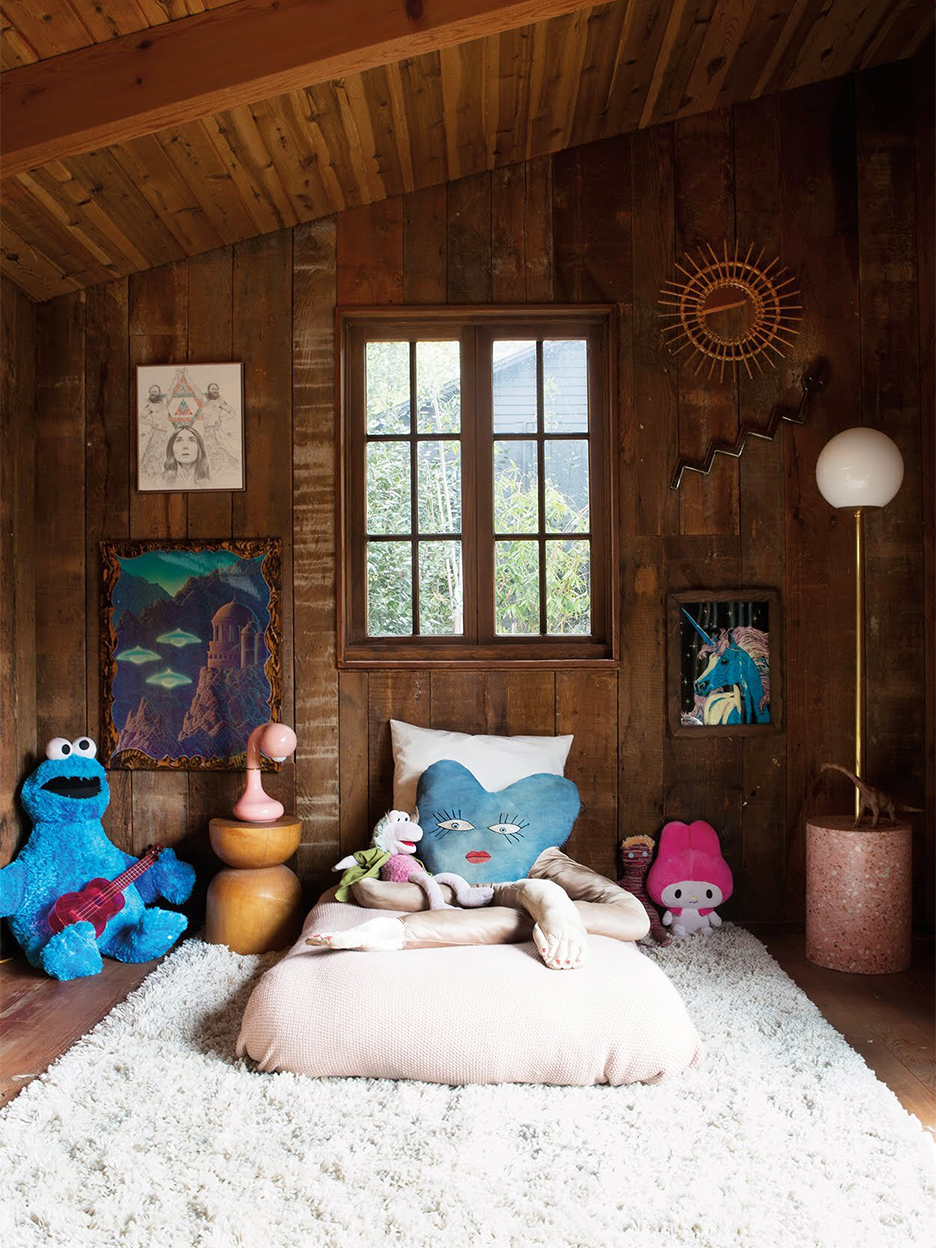We may earn revenue from the products available on this page and participate in affiliate programs.
Dr. Aliza Pressman knows a thing or two about parenting: She wrote her Ph.D. dissertation while taking care of her newborn. The developmental psychologist, host of Raising Good Humans podcast, and mom of two has made a career of understanding how the brain—its emotions, intellectual experiences, and all—develops over childhood, working with parents of kids in infancy to the teenage years to guide them through each new stage. And design plays an important role in that evolution. “An organized space is good for kids, just like schedules are good for them,” she explains. “It gives them the freedom to explore and be creative and wild, because they can predict the order of their own world.”
A frequent collaborator with Drew Barrymore on all things parenting (they regularly swap tips on IGTV and, most recently, Barrymore’s new daytime talk show), the psychologist has been working with the actor since her older daughter, Olive (now 8), was just a baby. Pressman puts a lot of emphasis on creating a space that makes children feel safe, builds their cognitive skills, encourages independence, and expresses their budding personalities. Here, she shares her tricks on designing your child’s surroundings, including a few key items to incorporate—because “roomscapes shape mindscapes.”
Infancy: Celebrate the Whole Family
Infants spend more time in their homes than anywhere else. An environment that stimulates the senses, where they can explore and experiment, not only positively affects their learning skills but also influences their behavior. Some pieces that can be brought in: a mirror for studying faces, a sturdy low bench they can pull up on, a peekaboo corner, and soft bins for toys that little ones can reach themselves (but rotate to limit access and therefore avoid overstimulation). Babies obviously can’t read yet, but surround them with literacy early on. It changes our tone as parents, too, when we walk into a room and there’s an inspiring framed quote or serene color scheme.
Bright Idea: Say It Proud
An essential requirement of children’s spaces is to have items and messages that honor who they are and where they come from. Think: family heirlooms, photos of grandparents, and other significant mementos peppered in.
Toddler: Set the Foundation for Good Habits
During early childhood, every stimulus can be a discovery and learning moment. Their bedroom is typically no longer reserved for sleeping. It becomes a place for reading, playing games, talking, FaceTiming with Grandma, listening to music, snuggling—you name it. Set up a space that helps them slowly start doing things themselves—a shelf or rack that displays books with covers facing out allows little ones to pick their own story-time read, and sturdy hooks can hold dress-up wear for whenever the mood strikes. Another great addition: small bins organized by color or category for the beginnings of kid-led cleanup. An organized play area has been associated with higher literacy rates, so putting in that extra effort early on is worth it.
Bright Idea: Diversify the Perspective
Hang things at their eye level. It’s empowering for kids to form their own point of view (in every sense) and see their artwork displayed. Using easy systems like art clips means you can swap out images as quickly as they produce new masterpieces.
Preschoolers: Establish Independence
At this point it’s important to set the stage for autonomy and build a sense of agency. Even what clothes they can choose from (fewer buttons, ties, and fussier details) can motivate children to dress themselves—which, with enough practice, they’re capable of doing by around age 3. Organize their closet to make it easy to reach things: lower shelves with open bins that are labeled so your child can help put things away (and also get reading cues for later). Their immediate surroundings now shape their identity—for example, a comforting space in which to calm down allows kids to self-regulate their emotions.
Bright Idea: Carve Out a Zen Zone
To create a peaceful nook, add a gauzy sheet with a pillow and cozy blanket, a lava lamp or snow globe, books, and pictures of people who make your kid feel happy.
School Age: Show Off Their Passions
The ability of a space to arouse a child’s feeling of belonging promotes healthy development. Now kids may want to be alone more, not like a teenager (yet!), but there is a need for spatial confidentiality and freedom of movement. Knowing that an area is exclusively theirs, even if they share a room, is paramount. Inspire mini design lovers to have ownership over their space and define how it looks and feels by letting them choose between a few (parent preapproved) paint swatches or bedding sets in their favorite colors. Memento boxes are a great way to show off collections as they grow (from seashells to theater tickets). For tweens, plants teach them to care for other living beings. And adding statement wallpaper or a free-form mural channels their style on all those Zoom calls.
Bright Idea: Make Decor Interactive
Hang a world map where kids can mark off the places that they have been or dream of visiting. It’s fun and educational and, as they get older, they can look back on how much they’ve achieved.
Our Fall Style issue has arrived! Subscribe now to get an exclusive first look at Ayesha Curry’s Bay Area home—and discover how design can shape our world.
